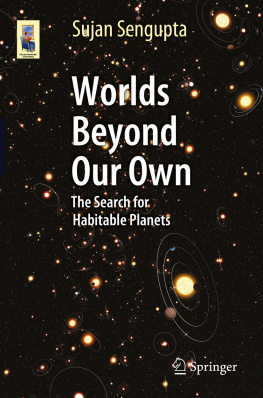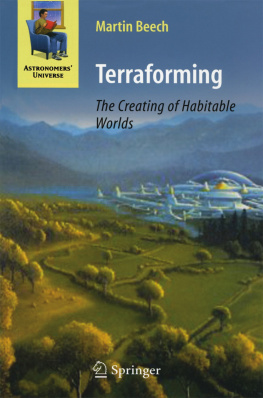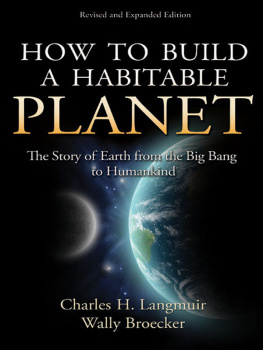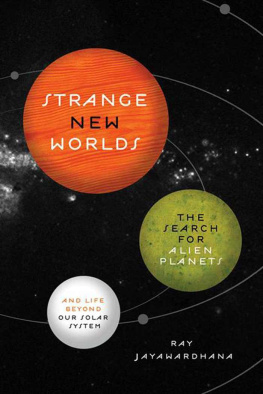1. Hierarchy in the Universe
Beginning of the Beginning
In the year 1905, Albert Einstein presented his theory of Special Relativity and revolutionized our understanding about matter and energy by telling that they were the same. He derived the famous E = mc 2 formula from his realization that space and time have the same status. This realization, in turn, was complimented by his assumption that the speed at which light travels in vacuum is constant in any reference frame. Now what is this reference frame? It is not difficult to visualize the concept of reference frame. Imagine that you are traveling in a train and you throw a ball to a co-passenger in the same direction the train was running. The average speed of the ball should be the distance between you and your co-passenger divided by the time taken by the ball to reach your co-passenger. However, if someone outside the train watches it, one would find that the distance traveled by the ball is the sum of the distance traveled by the train during the time you throw the ball and your co-passenger receives it and the distance traveled by the ball from you to your co-passenger. Consequently, the outside observer would find a higher speed of the ball. The most important thing to notice here is that the time taken by the ball to move from one point to the other will appear to be the same to you and to the outside observer although the distance traveled by the ball would differ. You and your co-passenger measure the speed of the ball inside the train which is one reference frame attached with the train. The outside observer measures the speed of the ball in another reference frame attached to the Earth. One reference frame is moving at a constant speed with respect to another reference frame. If another train passes you with a different speed as compared to the speed of your train and a passenger inside that train measures the speed of the ball, he or she will derive a different speed of the ball. So, the speed of the ball is relative to the reference frame wherein it is measured. Einstein considered that light would not follow this rule; the speed of light would remain the same in all reference frames. In order to describe any cosmic event, one has to consider both space and time together. Einsteins Special Theory of Relativity becomes significant only when the speed of an object is comparable to the speed of light. But nothing can exceed the speed of light. Now, if the speed of the ball or the train varies; i.e., if the ball or the train accelerates or retards, Special Theory of Relativity does not apply. For an accelerating reference frame, General Theory of Relativity has to be invoked. The contraction in length and the dilation of time is special relativistic effects whereas the acceleration due to gravitation is a general relativistic effect. Therefore, Special Relativity is a particular case of General Relativity. According to General Theory of Relativity, one can cancel the effect of gravitation locally by moving in an accelerating reference frame such as a free falling lift or aircraft. But it cannot be canceled globally. We know that the universe is expanding. All the galaxies are receding from each other. Since the rate of expansion of the universe changes, the dynamic of the universe is described by General Theory of Relativity.
We do not experience the effect due to Special Relativity in our normal life. However, it becomes significant while describing the dynamics of atomic and subatomic particles inside an extremely hot star or at the center of the galaxies. Similarly, the motion of planets, comets, etc. around a normal star can well be described by Newtons laws. But if an object is extremely compact and much heavier than the Sun, the dynamic of any object near such massive body needs general relativistic treatment. It is, however, worth mentioning that the perihelion precession of Mercury or the bending of light by the Sun is a consequence of General Theory of Relativity which, unlike Newtonian theory, demands that even the path of light is affected by the gravitational force of a massive body.
The universe started by an event or phenomenon popularly known as the Big Bang. By the beginning of the universe, we mean the event or the incident of the origin of space and time. What was before that? There was no before because cosmic time started at that point. There was no what because space originated at that point. All matters, energy, and everything that we know originated from Big Bang. We know matter and energy can neither be created nor be destroyed because there is a strict rule of conservation. True, but this conservation rule was violated only once, during the event Big Bang. It seems everything has come from nothing. The known laws of physics including Einsteins theories of Special and General Relativity break down at this point, and we still dont know what happened during the creation of everything. In fact a fraction of seconds after the creation of the universe, the space was so small that a classical treatment cannot describe it and one has to invoke quantum mechanics to explain the scenario. So, new laws of physics are needed to understand the Big Bang event. However, the amount of matter and energy created at that time remains the same forever.
Along with the matter and energy, four fundamental forces were also originated during Big Bang. Of course at the very beginning they all were unified into one single force and with time they started manifesting in different ways. Recent observation shows that the universe is accelerating which means the rate of expansion of the Universe is increasing instead of decreasing due to gravitational pull. This needs a huge amount of energy that causes repulsion. The acceleration of the universe is either due to the presence of some kind of unknown and bizarre energy known as dark energy which is quite different than the energy we encounter in normal life, or we are witnessing something beyond our current knowledge, e.g., something beyond the scope of General Theory of Relativity. If dark energy indeed exists, then the present universe contains 72 % of dark energy, 23 % of dark matter, and only 5 % of visible matter. The gravitational force governs the attraction among matters (even dark matter and dark energy) and plays the most crucial role in determining the dynamics of celestial objects in the universe. The electromagnetic force acts between two electric charges or magnetic poles. Our universe is electrically neutral because the net number of positive charges is exactly equal to the net number of negative charges. However, gravitation does not have such positive and negative quality. Matter and energy always attract each other due to gravitational force. The concept of force is replaced by the curvature or geometry of space time in General Theory of Relativity that describes gravitation. The distance between two points depends on the geometry of the space. In the Euclidean geometry, the shortest distance between two points is a straight line joining the two points. But in non-Euclidean geometry or in a curved space, the shortest distance between two points is not a straight line but is called geodesic. According to General Theory of Relativity, matterenergy determines the surrounding spacetime geometry and everything follows that geometrical path in its movement. On the other hand, the spacetime geometry tells how much matter and energy are present in a region.












